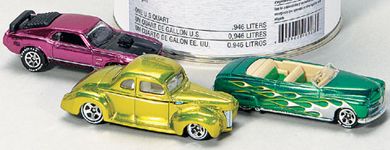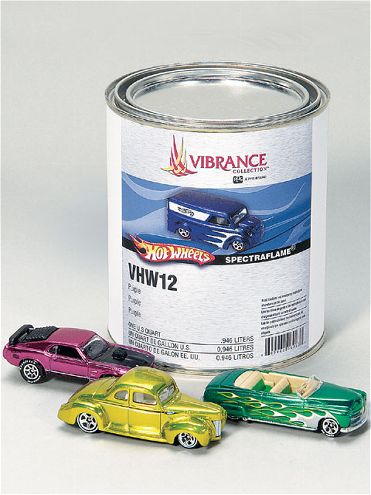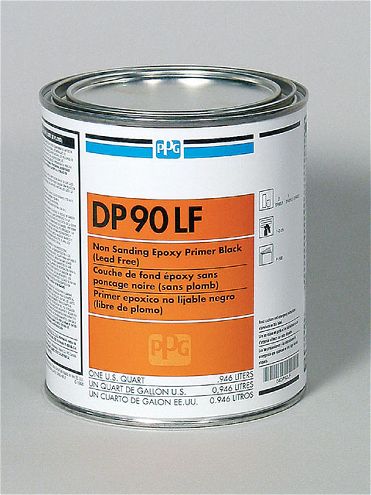
 PPG paint is found on many high-quality street rods where appearance counts; there's no reason why the same material can't be used in those hidden areas, as well. In most cases, just the basecoat will do, but satin clear is also an option.
PPG paint is found on many high-quality street rods where appearance counts; there's no reason why the same material can't be used in those hidden areas, as well. In most cases, just the basecoat will do, but satin clear is also an option.
Most street rodders put considerable time, effort, and money into the paint jobs on their cars, and it generally shows. But, while the outward appearance is important, street rods are sort of like icebergs-there's a lot under the surface that may not be visible.
While most of us would agree that the function of paint is to be pretty, it's also utilitarian in nature. Paint provides protection from corroAsion and general degradation on a variety of surfaces, many of which are not normally seen-and that poses an interesting question. Let's forget for a moment that there are those among us who want to clearcoat, color-sand, and polish the insides of the doors and concentrate on the average rodder. What type of paint should be applied in places that need protection but don't necessarily have to be pretty? That's the question we asked Gregg Whitmer at PPG and John Sloane at Eastwood. Here's what they had to say.
Gregg Whitmer Ppg Refinish Training To answer your question, I asked PPG training instructors Jeff Sommers and Jeff Matauch for a recommendation. Sommers is a PPG instructor in the Hartford, Connecticut, area; Matauch is a PPG instructor in the Detroit, Michigan, area. If anyone has questions, their training center phone numbers can be found at www.ppgrefinish.com under the "Training and Support" link. They agreed that the following products work great for the application mentioned in your question.
 Another version of PPG's epoxy primer is black DP90LF. LF stands for lead free.
Another version of PPG's epoxy primer is black DP90LF. LF stands for lead free.
Jeff Sommers: The factory never painted inside or under dashes or package trays. Whatever happened to hit there was lucky. With that said, if I was to do a hot rod/musclecar, I would look at it two ways.
1. If you are positive that it cannot or will not be seen (there are a lot of people out there who will purposely look to see the "detail"), then just simply apply DP90LF epoxy primer. It's black, it sticks to anything, and it provides excellent corrosion protection. It does not need to be top-coated when used on the interior or under the car where it is out of the sunlight.
2. If there is a chance you can see the area, then you need to either color coordinate the interior color or exterior color. Use the same color system as on the exterior of the car, or use a PPG basecoat without clear on the interior for a lower-gloss effect.
Jeff Matauch: I agree with Jeff on the DPLF epoxy primer. Some manufacturers used a red-oxide primer similar to the color of DP74LF epoxy primer, so that could be another choice. Street rod guys will sometimes get very detail oriented, so they may want something more. I would suggest painting to match the interior or exterior color followed by a couple of coats of the new PPG Vibrance VC5225 Soft Touch Clear. It has an easy 2:1 mix ratio, has a low-gloss finish, feels like fabric, and the best part is it is super scratch resistant. It's perfect for interiors.
John sloane eastwood co.
There are many areas on any car that don't necessarily need paint but still need protection, and Eastwood has a variety of appropriate materials.
One of the increasingly touchy subjects faced by homebuilders is the application of paint products. While some of Eastwood's products are sprayed with conventional equipment, they also offer a variety of protective coatings that come in spray cans or are intended to be brushed on. Take a look at some of Eastwood's offerings in the included photos.